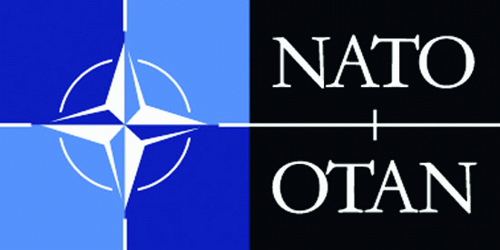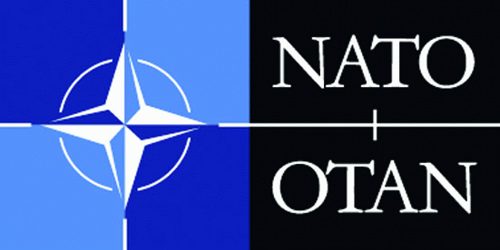The Soviet threat provided NATO’s main rationale and explanation until the Warsaw Pact disbanded and the Soviet Union disintegrated. What is it about the transatlantic bargain that has ensured its survival beyond its founding raison d’être?
In 1989, with the fall of the Berlin Wall, the the allies were left to assert in the early 1990s that unspecified threats and risks could require allied military cooperation in the future. Those assertions by NATO governments were not credible to many experts who predicted the demise of an alliance whose founding rationale had gone away. Even during the Cold War, the transatlantic alliance had been said to be in crisis or disarray on a continuing basis, whether caused by the US failure to support the British and French invasion of the Suez in 1956, France’s departure from NATO’s Integrated Command Structure in 1966, differences over how to deal with the 1979 Soviet invasion of Afghanistan, deployment of intermediate-range nuclear missiles in Europe in the 1980s, or other causes of friction and debate. Why wouldn’t such differences in the future lead the allies to abandon the cooperation that had seemed so essential during the Cold War?
One expert, Wallace J. Thies (Why NATO Endures: Cambridge University Press, 2009), has provided a detailed and compelling answer to this question. According to Thies, NATO is different from previous alliances in at least two key ways.
First, it was established not just to meet a specific threat or serve a narrow purpose, but was designed to have much more lasting utility.
Second, NATO was an alliance among liberal democracies, with a value foundation that previous alliances had lacked. Regarding the unique nature of the alliance, Thies writes, “The Atlantic Alliance . . . was intended to promote cooperation among its members that would be both intensive and extensive, as symbolized by the commitment in Article 3 to “continuous and effective self-help and mutual aid” and the inclusion of Article 2 with its provisions for cooperation in nonmilitary endeavors . . . The Atlantic Alliance . . . was formed by members sharing a common heritage, common values, and common interests, backed by a willingness to pool their resources in peacetime as well as wartime for the sake of defending and advancing those common values and interests.”
Thies maintains that evidence usually offered to suggest impending doom for the alliance—“critical comments, rude behavior, mutual exasperation and even anger” —can be misleading. The evidence summoned by Thies suggests that when the allies appear to be on the verge of a deal-breaking dispute, they usually make the most serious efforts to find common ground, make compromises, or work around issues. The frequent difficult periods described by many of us over the years as “crises” in the alliance, were in fact difficult circumstances that might have brought a less solid alliance to an end.
Some Sinologists have argued that the Chinese characters for “crisis” do not translate into “danger creating opportunity,” as it has been popular to say. However, it is true that while each crisis has left marks on the alliance, most of the wounds healed quickly and the alliance members refused to let their differences bring the alliance down. More often than not, the perception of a crisis helped provide the stimulus for resolution or at least management of the issue at hand. The transatlantic bargain is, without question, an alliance of commitment, not just convenience.
At the end of the Cold War some observers speculated that, without an existential threat to keep the allies together, the natural economic frictions among the allies would lead to their strategic divorce. During the Cold War, the allies fought over a wide variety of economic issues—ranging from debates over imports of chickens (the “chicken war”) to subsidies for European farmers (the European Union’s Common Agricultural Policy). It seemed natural to some analysts that the predictable trade and financial frictions between the United States and Europe would threaten cooperation on broader political and security relations. This did not happen. In fact, the end of the Cold War witnessed a dramatic expansion of transatlantic trade and economic interdependence. The international economic system accommodated the inclusion of many new and important players, but continued to revolve around the relatively stable core of transatlantic cooperation.
The reality is that it was not the Soviet threat that kept economic differences from destroying the alliance during the Cold War, it was the nature of the international economic system. That system is based on a complex and imperfect set of rules and regulations. The natural interaction of competition among trading states produces frictions which can lead to trade disputes and bilateral tensions. However, the system also relies on resolution of such conflicts through negotiations and adoption of new rules and new financial and economic relationships. All trading partners know this. They understand that their interests require eventual settlement of disputes. They also understand that new competition and conflicts will arise, and will require the same process of negotiation and compromise to return to cooperation. The system, in this general sense, was self-regulating during the Cold War, and is so today. It does not require an external threat to function effectively.
Stan Sloan is the founding Director of the Atlantic Community Initiative. This article is adapted from his forthcoming book, Permanent Alliance? NATO and the Transatlantic Bargain from Truman to Obama (Continuum Books, 2010).
Image: NATO-OTAN_0.jpg

